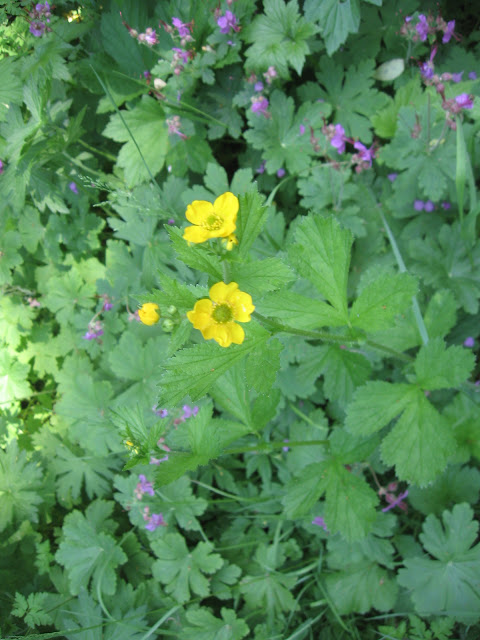Barberries and Sumacs, and a few other natives in bloom. For more Wildflowers, join the fun at Gail's Clay and Limestone.
I was excited to find my tiny seedlings from last year starting to grow, Berberis fendleri! They are not only beautiful shrubs that are very tough, but also thorny to repel deer and have EDIBLE berries.
They are part of my plan to reclaim an area where the PO dumped many large logs, which has been overrun with Himalayan blackberry vines ever since, 17 years. Last year I waged total war on the blackberries and cut and removed them all, see the before and after photos last fall in the link. I now have to patrol and dig any that try to come back, which may take some time but hopefully not as much as dealing with the vines every year. Here is this area now-
I also planted some Rhus trilobata and Rhus aromatica which have berries as well. I hope over time the whole area will be covered with shrubs which will help suppress the berry vines. Rhus sprouting-
Thanks to my Big Leaf Maples, I will be pulling hundreds of seedlings out of the area, in addition to fighting the berry vines.
I have allies in the native plants, though, which also try to move into the vacuum, here a Spring Beauty, a lovely edible plant related to Miner's Lettuce and with an edible tuber-
Other woodland carpet plants are sprouting as well, Circaea alpina and Hydrophyllum tenuipes, Pacific Waterleaf, respectively to the lower left and upper right of another B. fendleri-
Other native plants are growing here as well, Maianthemum racemosum, Plumed Solomon's Seal, whose flowers have a wonderful, heady, restorative fragrance-
and the very abundant in some parts of my yard Berberis nervosa, what a shock to visit this website and find Mahonia has been renamed Berberis. They have an edible berry which is good cooked mixed in with other berries and full of antioxidants. I thicken berries with Guar Gum or gelatin and sweeten with Stevia.
One of the native roses also grows there, some Fireweed, a couple of sword ferns, and a native Red-Flowering Currant Ribes sanguineum-
and around the corner an Oemleria cerasiformis. It is great to see the wild plants liberated from tyranny and able to come back.
Hannah


































